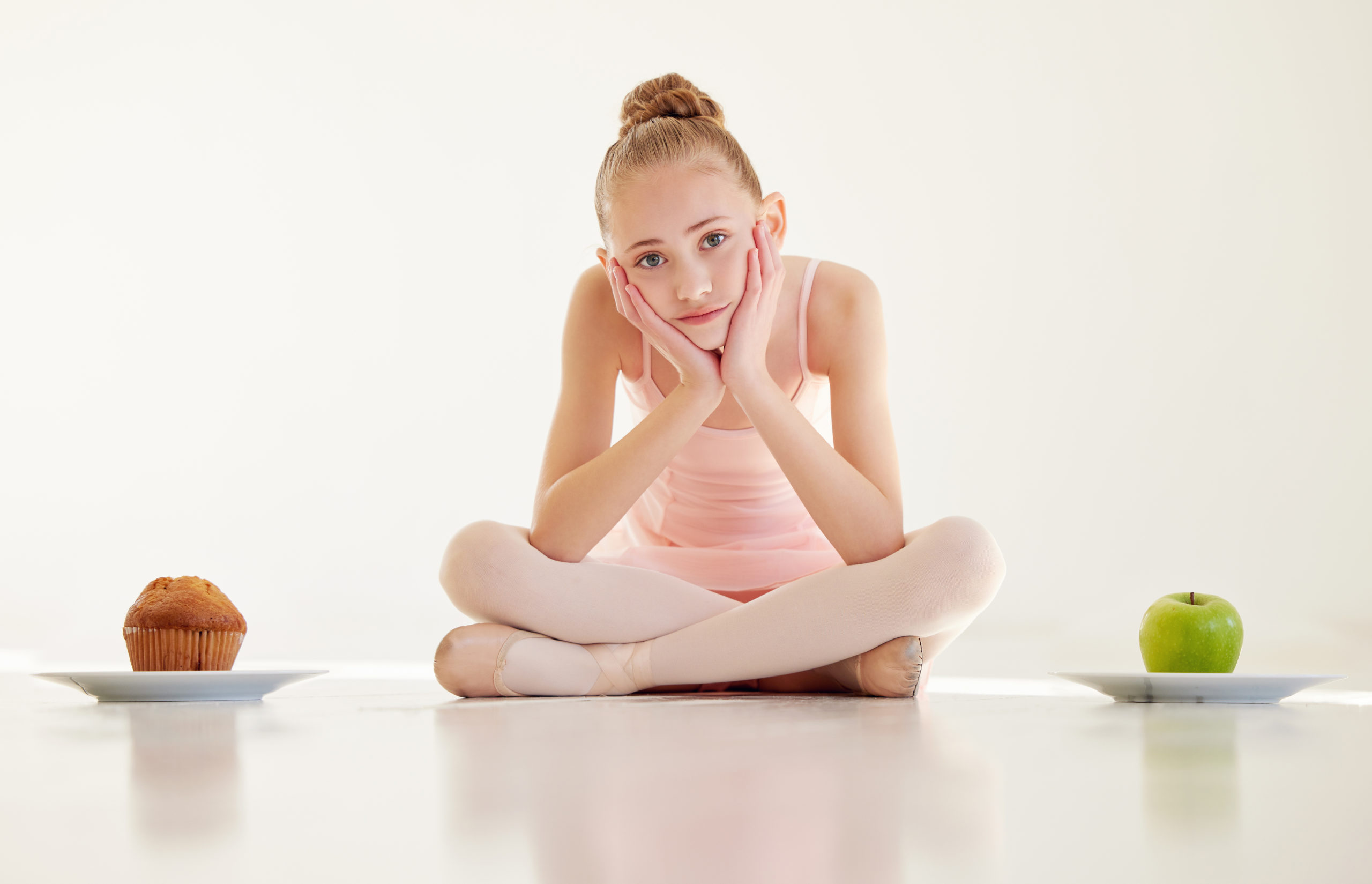
Dancers are often inundated with harmful messages surrounding body ideals and restrictive dieting behaviors. Target weights, calorie goals and “body talks” are just a few examples of how diet culture infiltrates the studio. Dance educators need to unlearn the messages of diet culture to ultimately support an inclusive and sustainable studio environment.
To dismantle the insidious messaging of dancer diet culture and help your students take a healthy approach to food and their bodies, consider these three actionable tips.
No. 1: Stop Labeling Food as “Good” and “Bad”
All foods are morally and emotionally equivalent. In other words, our personal values are not reflected by our food choices. When we eat food that we have previously labeled as “good,” then we assume a degree of moral superiority. The opposite holds true for food deemed “bad.” This invisible moral hierarchy not only induces shame and guilt after eating, but also increases the brain’s motivation-and-reward response for those options deemed “off-limits.”
Seemingly harmless comments like “Fruit is better than your granola bar” can cause dancers to doubt their judgment. Instead, encourage your students to utilize judgment-free curiosity to discover what foods fuel their minds, bodies and souls. When it comes to food, there is no “good” nor “bad,” but, rather, the foods that support your body’s individual needs.
No. 2: Strive for Body Neutrality
Helping your students heal their relationship with food goes alongside helping them heal the relationship with their bodies. But for many dancers, the idea of body acceptance is daunting, especially while entrenched in culture that is saturated with body ideals.
Aim for a neutral approach. Body neutrality is a practice that allows us to exist without having to overthink how our bodies look. Colleen Werner, a therapist and coach explains, “While body neutrality and body acceptance are similar, striving for neutrality can often feel much more approachable and less intimidating.”
Body neutrality enables us to consider how our bodies function at any given time. We challenge negative self-talk and introduce compassionate self-care to explore our bodies’ vast capabilities. To start the work, Werner recommends journaling prompts that foster body neutrality. “Remind your students to ask themselves: ‘Who is profiting off of you for hating your body, and what is something that your body does for you that you are grateful for?’” Werner believes that “once dancers work towards a place of neutrality, they may be able to take steps toward acceptance.”
No. 3: Consider Professional Support
The journey towards healing your relationship with food and body image is not linear, and one can experience days that are easier than others. With an abundance of information at your fingertips, it can also be challenging to distinguish between what is helpful and what is harmful. This is especially true for a behavior like “clean eating,” which often introduces itself as a harmless attempt to attain “health” and “wellness.” But advice to avoid any one food can leave dancers feeling overwhelming amounts of food guilt. Encourage your students to seek support from a registered dietitian nutritionist, a licensed dietitian and a mental health therapist to help them with deconstructing the misinformation around food. Ultimately, the goal is to empower your dancers to build competence with their food choices and confidence with their bodies.





